¶ Customer Journey Map
¶ What it is
A Customer Journey Map visualises a customer’s experience over time as they interact with the product/service. It is presented from the customer's perspective and tells a story that focuses on what the customer thinks, feels, and does at every touchpoint.
¶ Why it is useful
The Customer Journey Map is based on the aggregated insights and experience patterns you have collected in your research. It helps you build empathy for the customer and understand how they experience your service. It also creates a shared understanding of the customer’s experience across the organisation and pinpoints specific touchpoints that cause pain or delight.
¶ When to use
To make the most out of a Customer Journey Map, your team should constantly reference and update it as the service evolves. However, the earliest you can start using this tool is after you have begun to grasp who your customers/customers are and what steps they take when trying to achieve their goals.
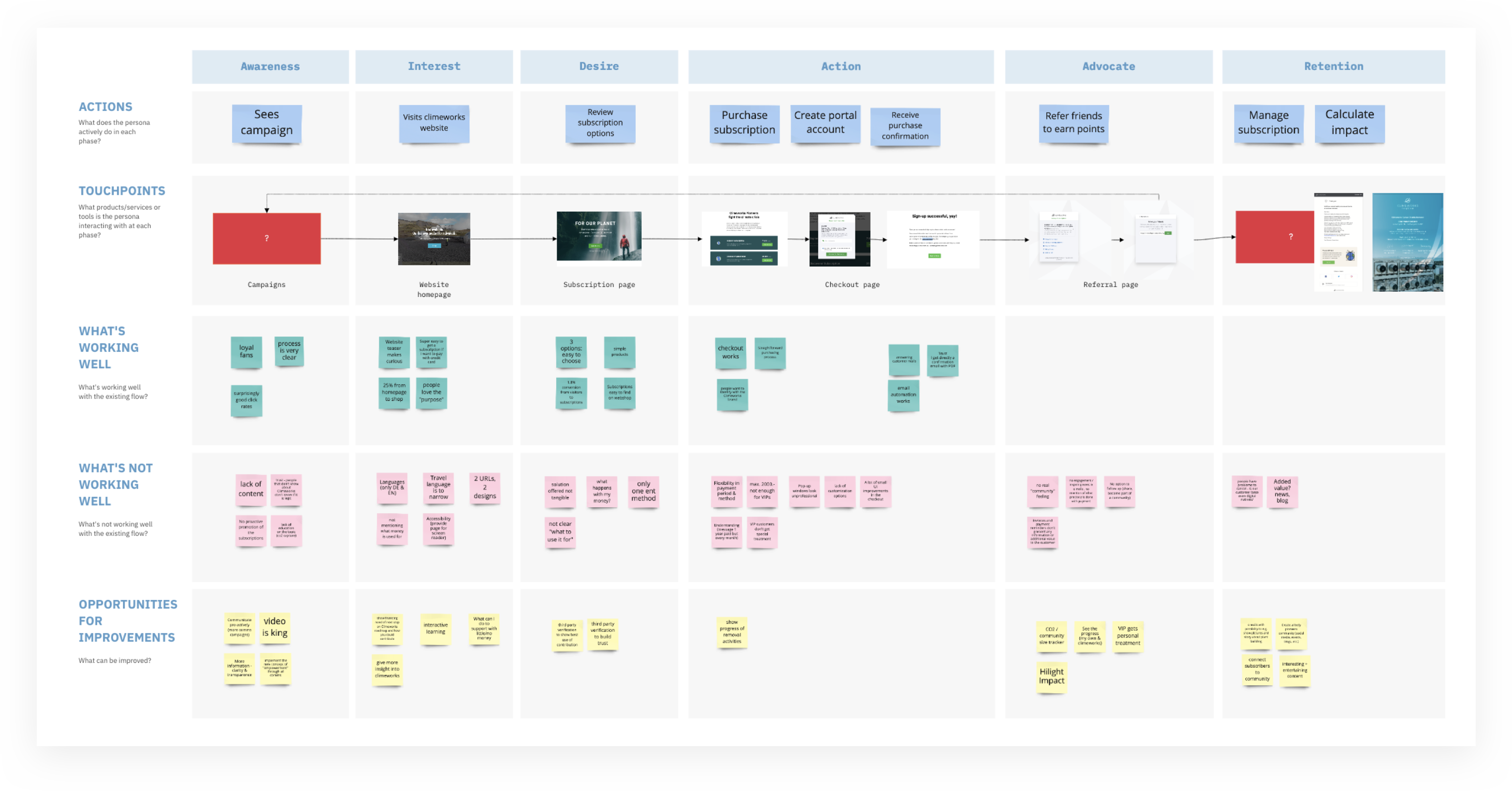
¶ How is it done
- Pick a journey: Decide whether you want to map an “end-to-end customer journey” or focus on a more detailed part of a particular journey.
- Whose journey: Decide whose journey you are mapping. For example, do you focus on several customers or one single customer?
- Level of detail: Decide the level of detail of your journey map. You don’t need to dig deep into areas that work fine today.
- Level: highest level, describing whether the customer is in the phrase “before,” “during,” or “after” a service
- Level: Describe the activities during each phase (e.g., in the “before” phase, you will have a “signing up activity”). There are usually 4-10 activities per phase.
- Level: describing the activities in the above lane in even more detailed steps
- Draw map architecture: Start with the horizontal lanes. Make sure that the top lanes contain customer phases and activities. The further down you go vertically, you may add touchpoints, pain points, or pain relievers.
¶ Do's & Don't
Do's
- Start mapping the journey by splitting it into three phases: before, during, and after the service. Then add more details by describing each touchpoint.
- Check back on the insights from your research to ensure the Customer Journey Map is mapped completely.
- Regularly update the Customer Journey Map - it is a living artefact!
¶ Tools needed
- Whiteboard (virtual)
- Post-its, paper, pen (virtual)
¶ Example
For the Customer Journey Map, you can build upon your work during the Understanding Phase. Initially, you can start by drawing a Customer Journey Map first (As-Is Customer Journey) based on what we already know before we conduct customer research. Afterwards, you have identified some gaps and validated some assumptions, which real data from the field can now replace.
The Customer Journey Map / Service Blueprint helps you in two ways. First, you know at what point in time a pain point is occurring. And second, you see the stakeholder who is facing this issue. So in the solution phase, you can use this information wisely to understand what you need to change to solve the problem.
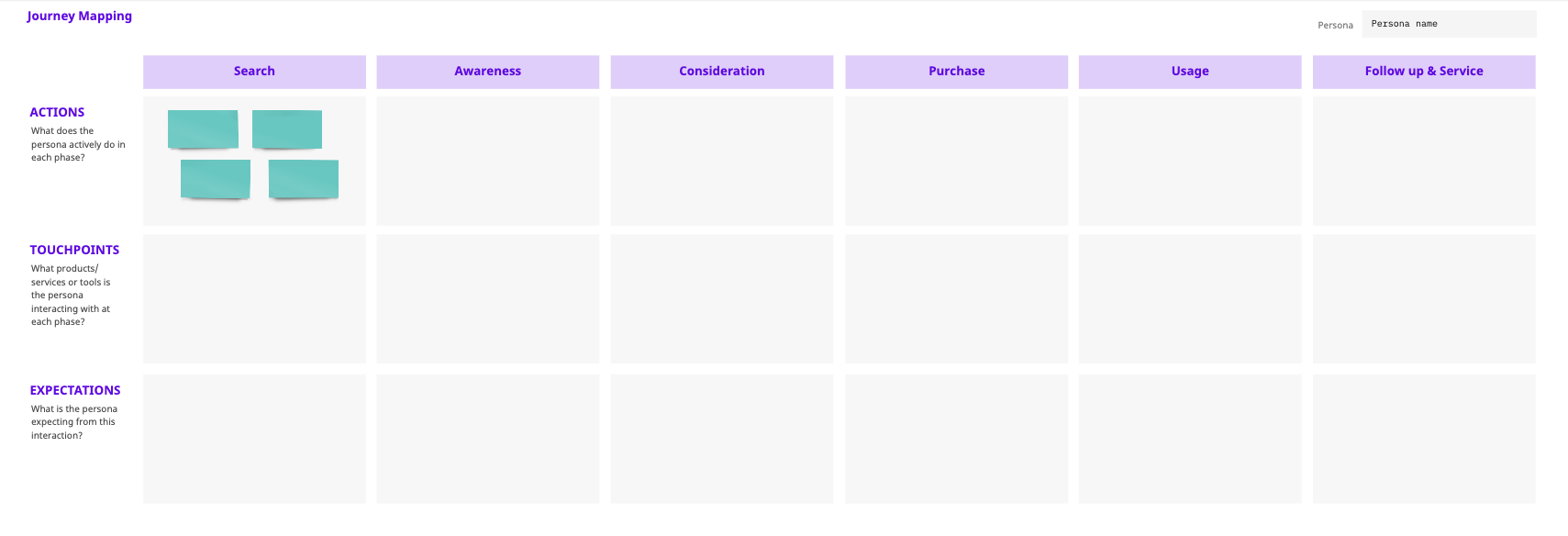
¶ Customer Journey Map Resources
¶ GenAI Tool Use Case
¶ Optimizing the Customer Journey Mapping
QoQo creates a user journey map with the steps user takes when interacting with your product/service, identifying areas where users may be struggling
Key Steps Tutorial:
- Open QoQo from the Figma plugin
- Select “User journey map" from the menu
- Enter detailed information
- Click the "Generate" button to complete
- Successfully generated
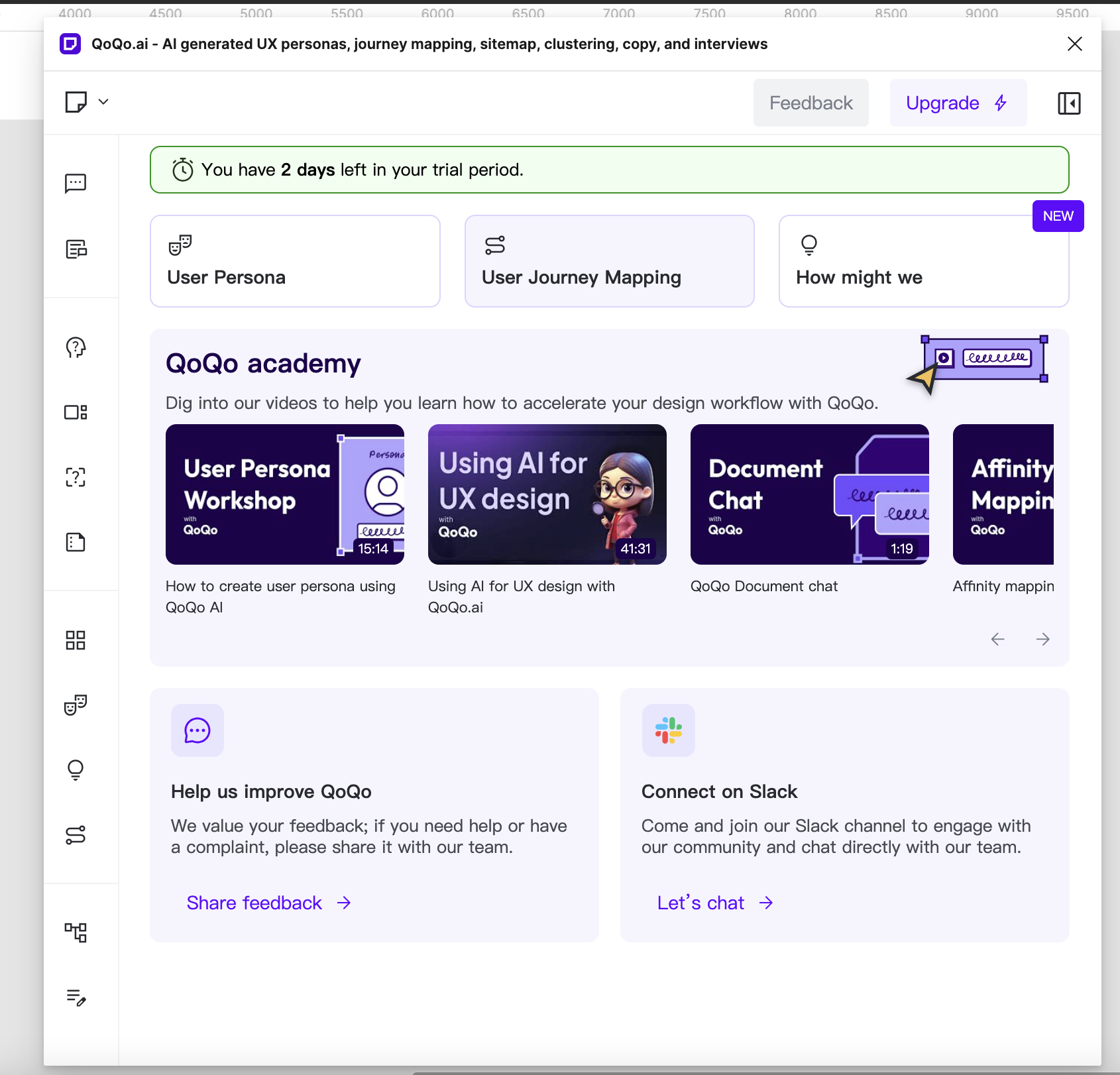
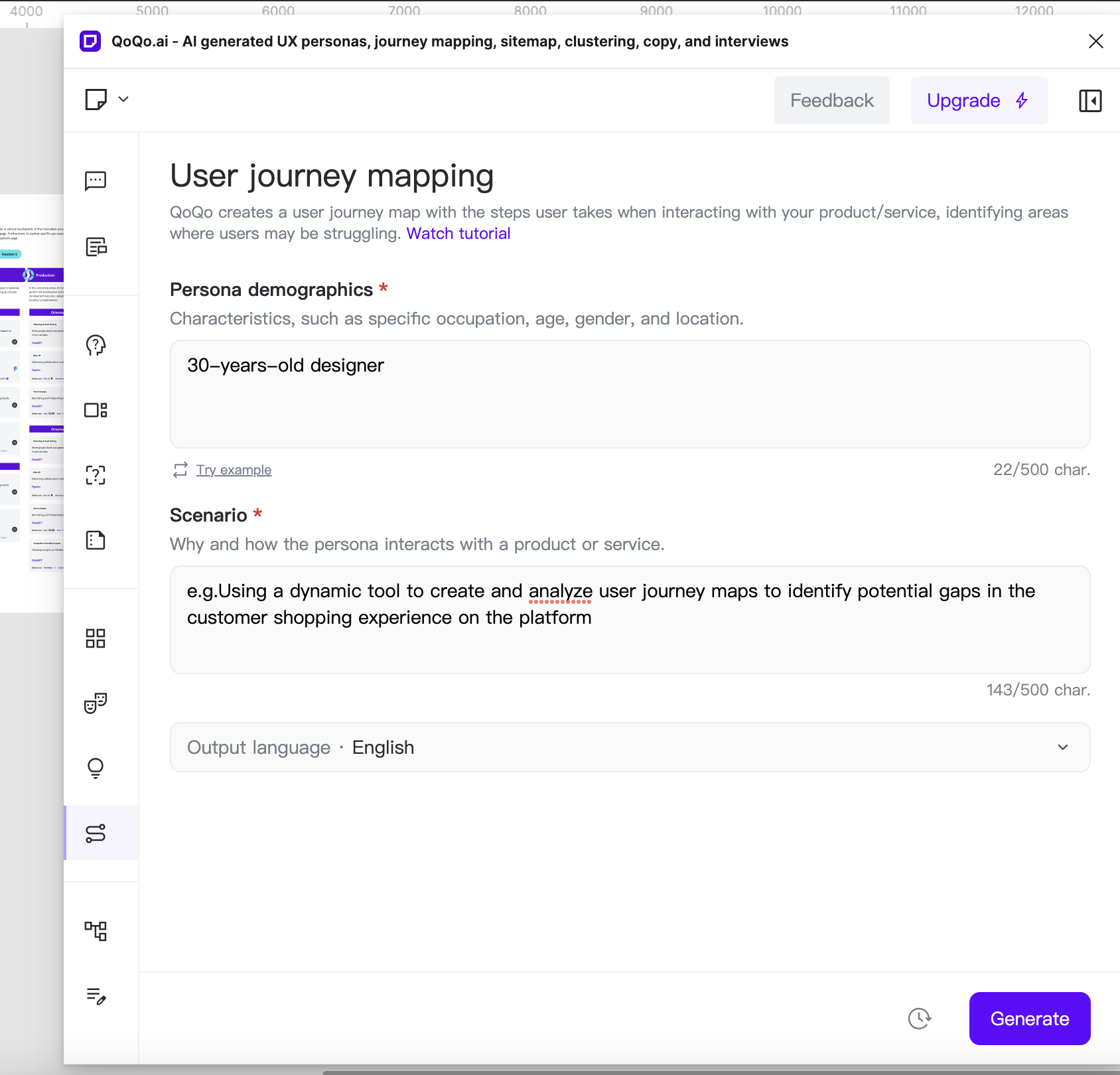
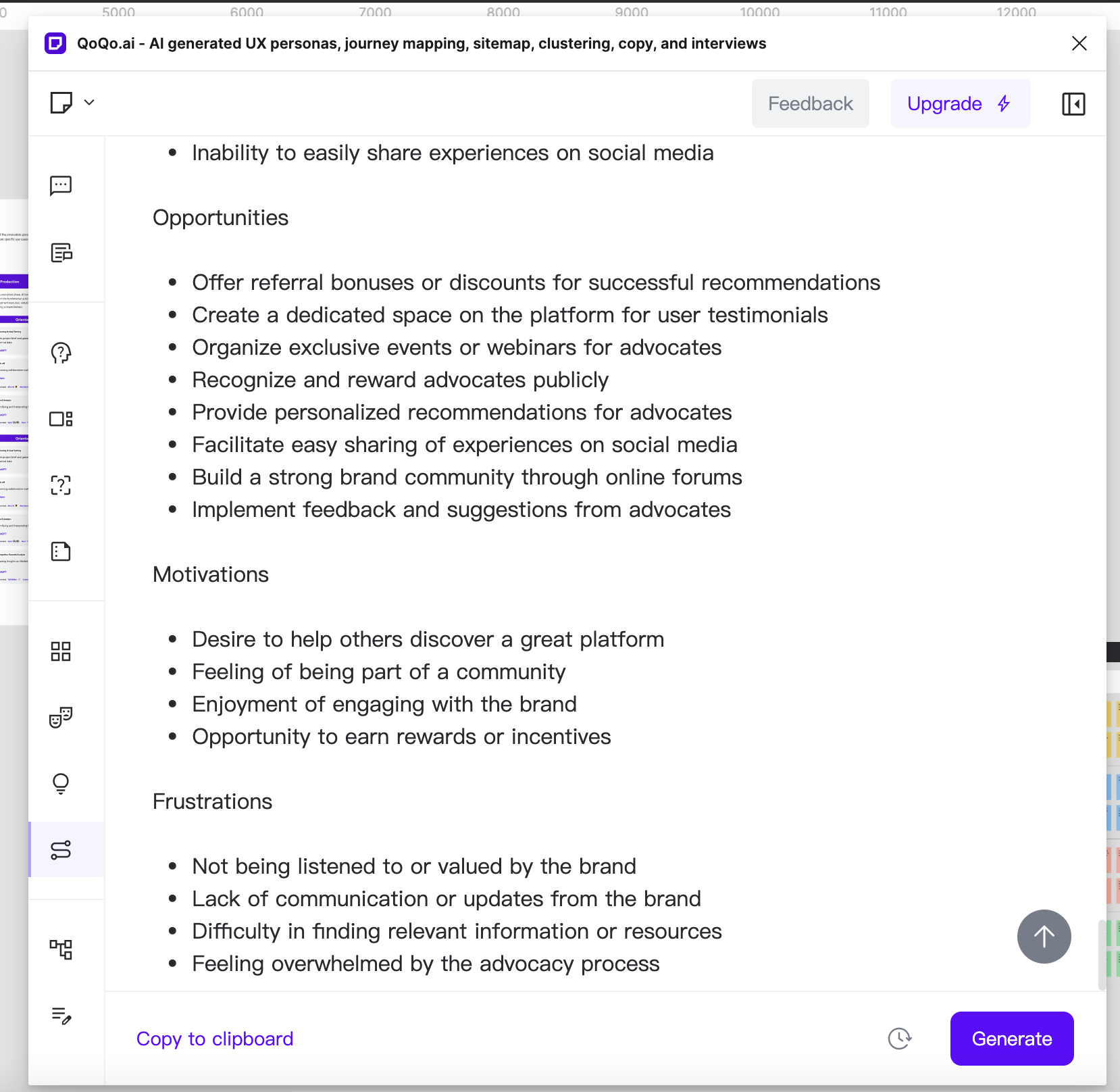
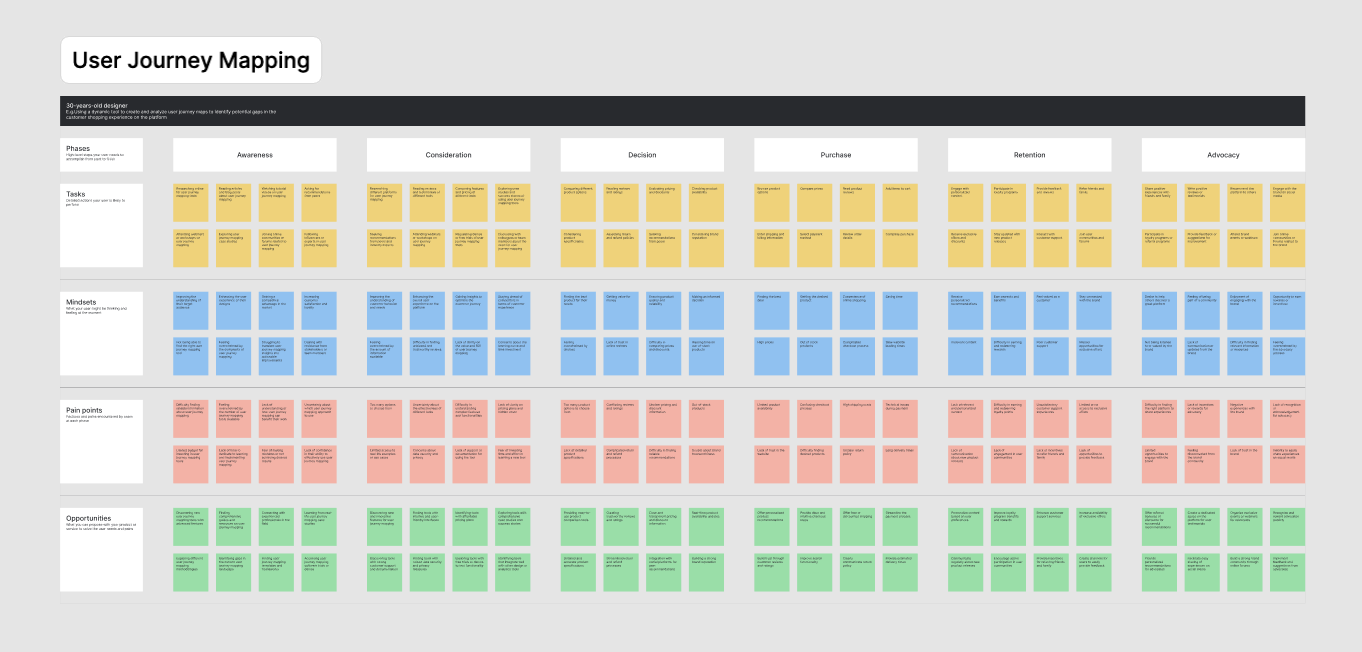
Read More:
AI in UX – how I saved time and improved user understandinge
